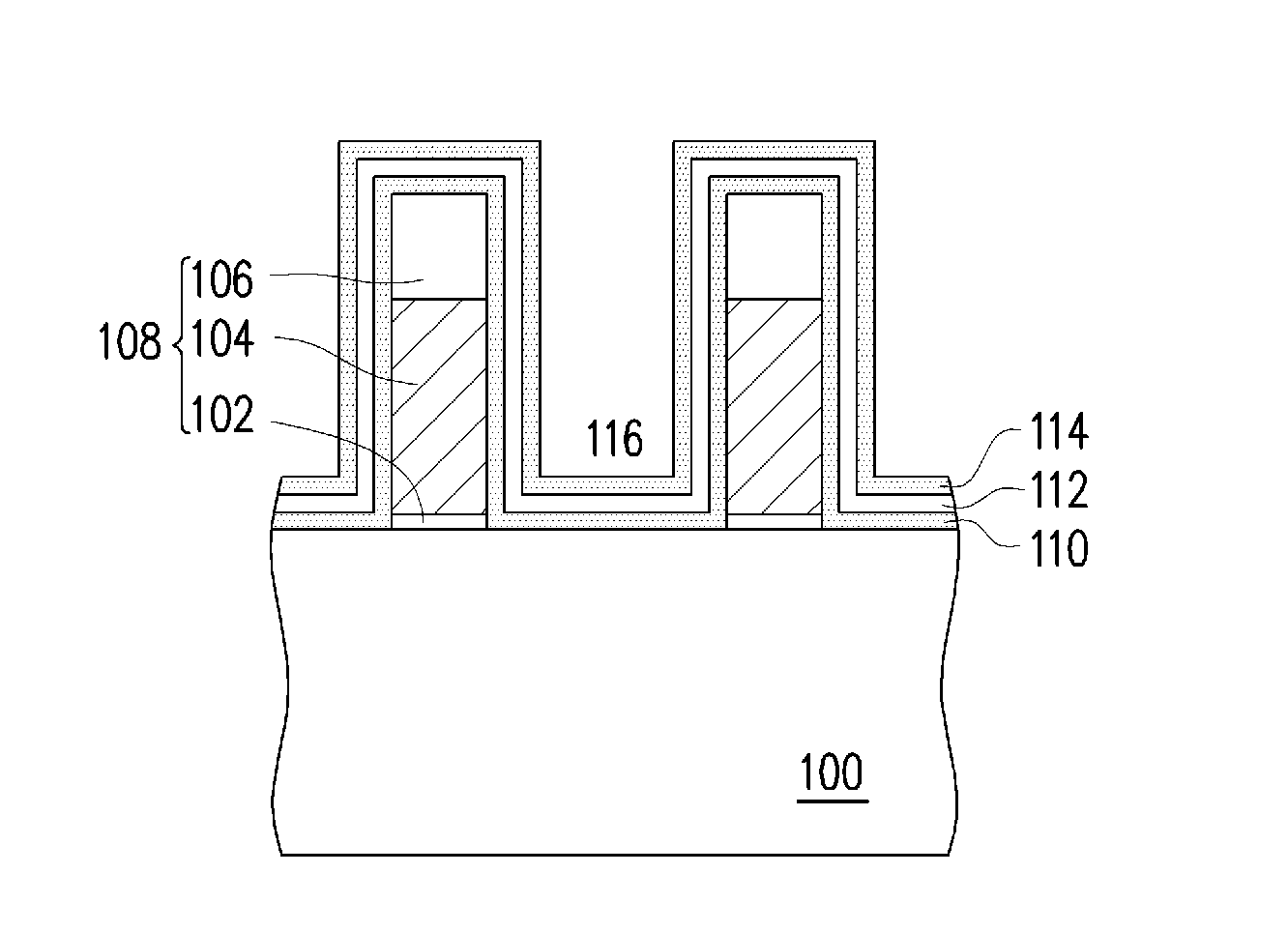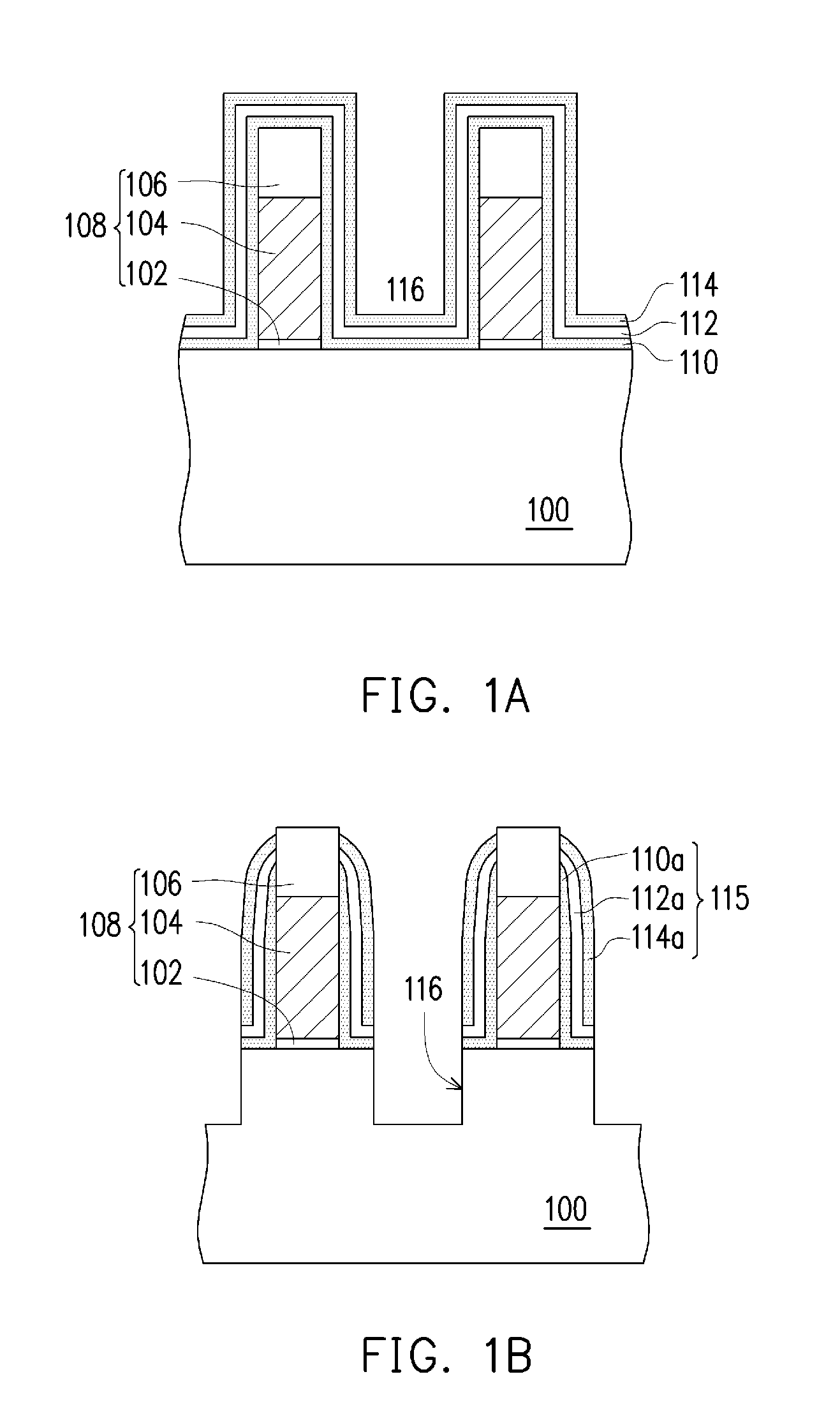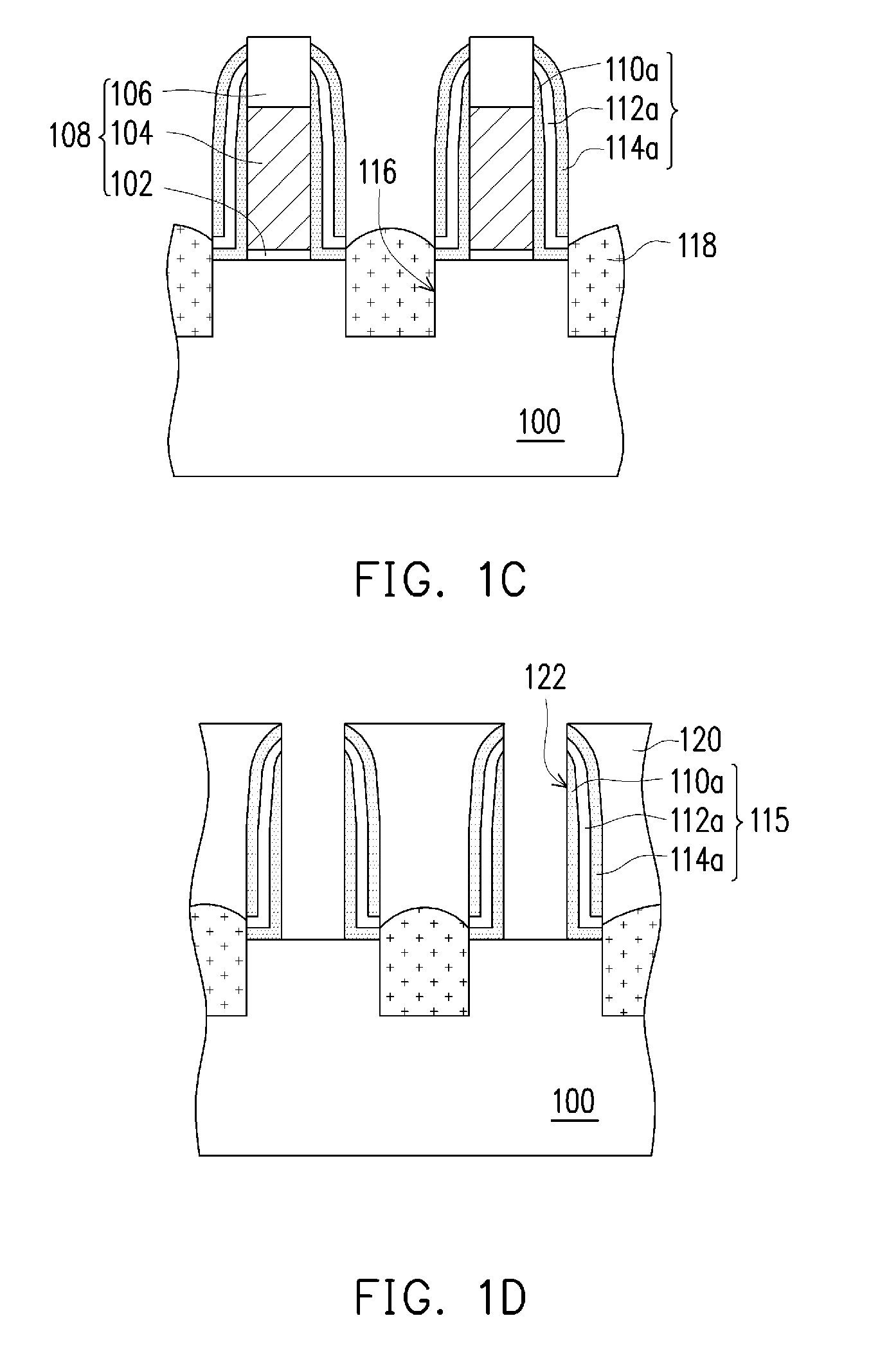Semiconductor device and method of forming the same
- Summary
- Abstract
- Description
- Claims
- Application Information
AI Technical Summary
Benefits of technology
Problems solved by technology
Method used
Image
Examples
Embodiment Construction
[0031]FIG. 1A to FIG. 1D are schematic cross-sectional views illustrating a method of forming a semiconductor device according to an embodiment of the invention.
[0032]With reference to FIG. 1A, at least one stacked structure 108 is provided on a substrate 100. The substrate 100 is a semiconductor substrate, e.g., a silicon substrate. Each stacked structure 108 includes an interfacial layer 102, a gate 104, and a cap layer 106 sequentially disposed on the substrate 100. The interfacial layer 102 includes silicon oxide, silicon nitride, a high-k material with a dielectric constant greater than 4, or a combination thereof. The high-k material can be metal oxide, e.g., rare-earth metal oxide. Besides, the high-k material can be selected from the group consisting of hafnium oxide (HfO2), hafnium silicon oxide (HfO2), hafnium silicon oxide (HfSiO4), hafnium silicon oxynitride (HfSiON), aluminum oxide (Al2O3), lanthanum oxide (La2O3), tantalum oxide (Ta2O5), yttrium oxide (Y2O3), zirconium...
PUM
 Login to View More
Login to View More Abstract
Description
Claims
Application Information
 Login to View More
Login to View More - R&D
- Intellectual Property
- Life Sciences
- Materials
- Tech Scout
- Unparalleled Data Quality
- Higher Quality Content
- 60% Fewer Hallucinations
Browse by: Latest US Patents, China's latest patents, Technical Efficacy Thesaurus, Application Domain, Technology Topic, Popular Technical Reports.
© 2025 PatSnap. All rights reserved.Legal|Privacy policy|Modern Slavery Act Transparency Statement|Sitemap|About US| Contact US: help@patsnap.com



